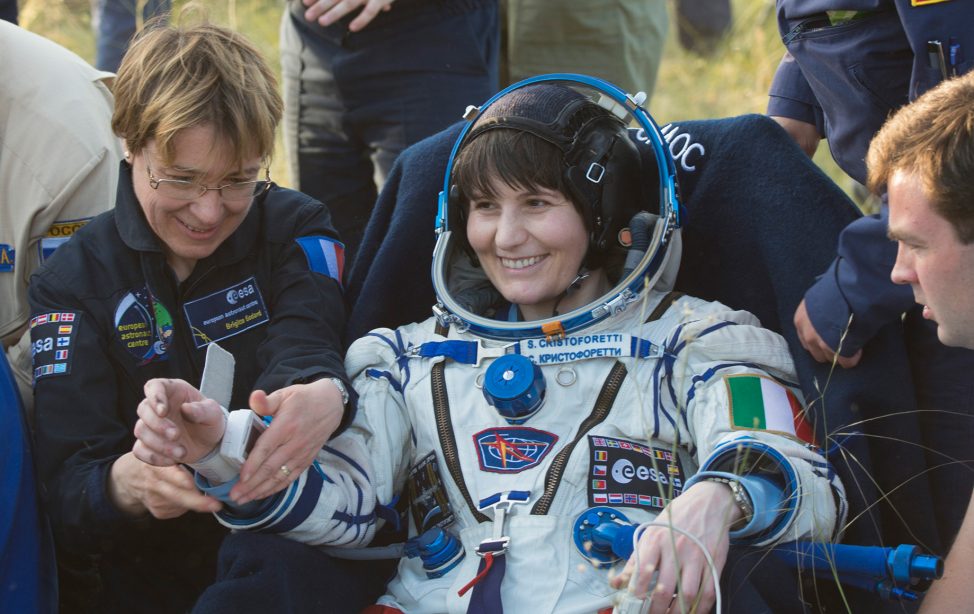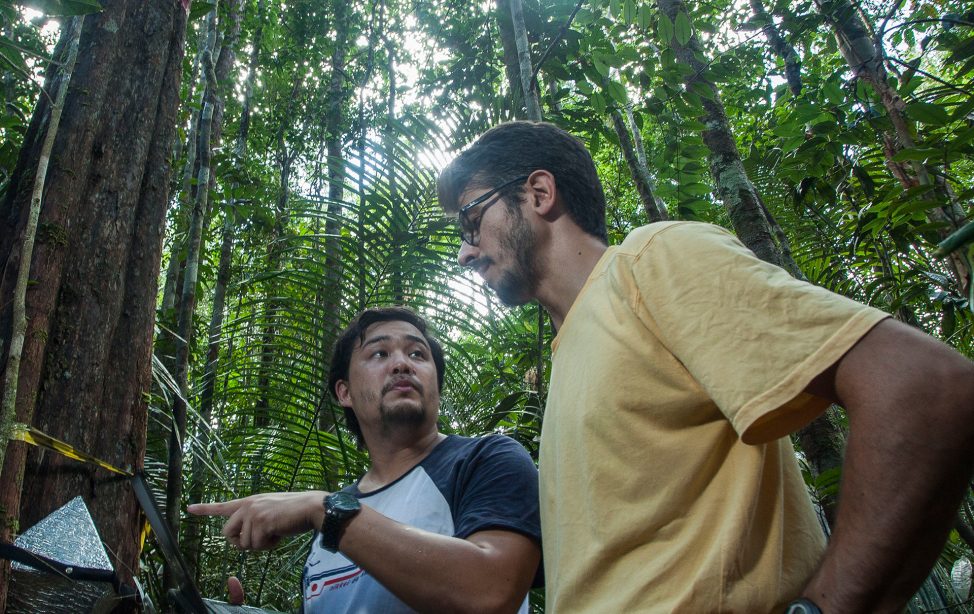
How do you come up with the decisive idea? Three Nobel Prize winners from TUM tell us (Image: Pexels/Nikolai Ulltang).
We asked three TUM Nobel Prize laureates how important creativity is for their work.
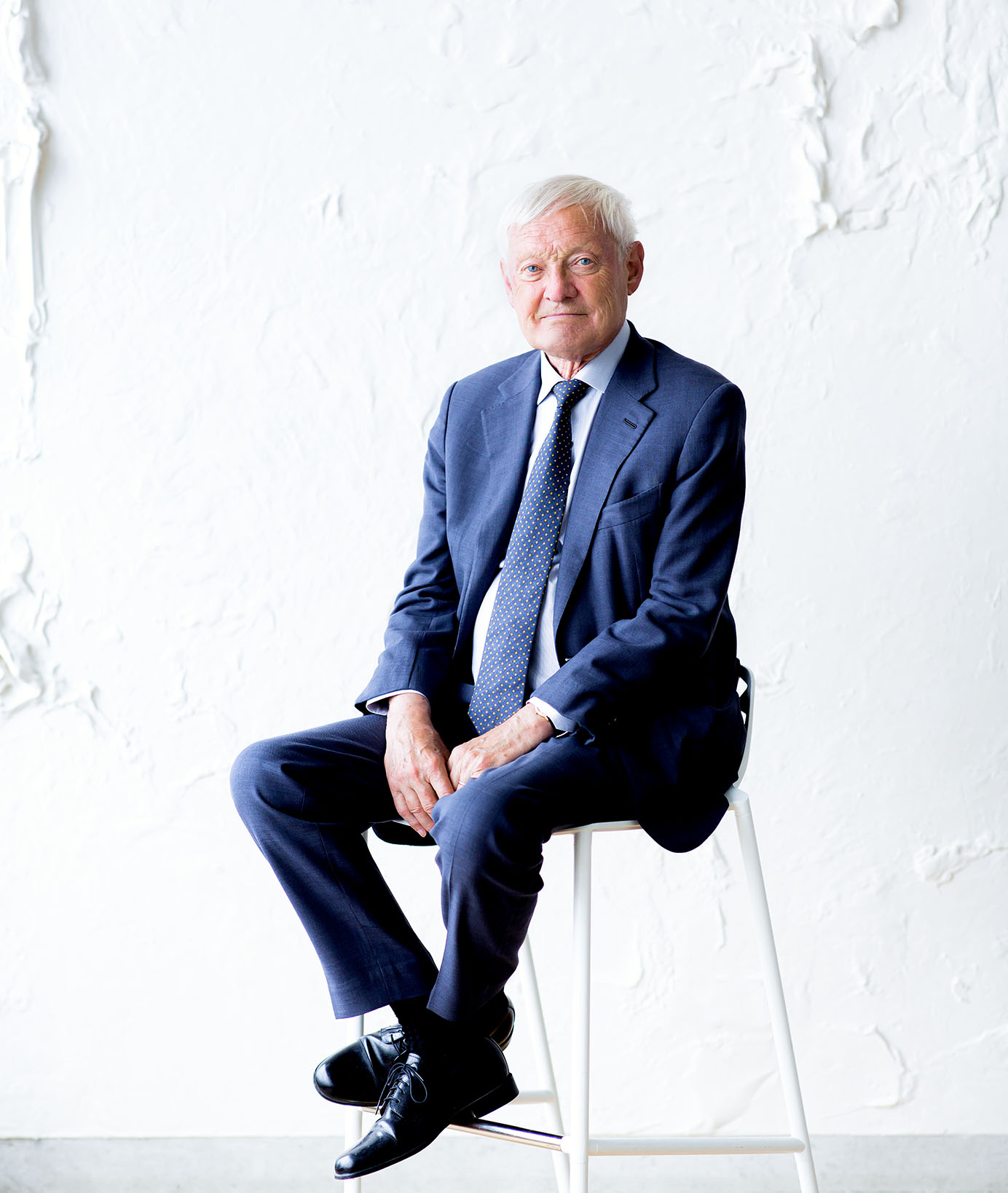
Nobel Prize laureate Joachim Frank on a 2019 visit to TUM (Image: Magdalena Jooß/TUM).
Nobel Prize in Chemistry 2017
How do creative approaches play a role in your scientific research?
They are essential. Much of my work has focused on the development of new methods, and when faced with a problem I always find it necessary to look for possible answers in other areas of science, engineering or math. Thinking in metaphors is one of the strengths in a scientist. In Germany Goethe stands out as a man with a large quiver of metaphors, which he employed in both his literary work and in his scientific explorations.
What do you do when you just can’t get ahead in solving a problem?
I turn my attention to something else. That might be another scientific project, or an administrative action I have long postponed, or a grant proposal I have been working on and off. My experience is that associations and stimulations generated in a different area will help in finding a different angle of attack in the project that is stuck. In fact, the attempts to find a solution have their own subconscious life inside of my brain, and probably go on day and night.
Apart from Science, your second passion is creative writing: What does writing mean to you?
I started writing when I was in high school. I was a founding member on the editorial board of the high school journal Strebergarten in my gymnasium. Over the years I wrote German poems and short pieces of flash fiction influenced by the DADA movement. I started writing in English after I moved to the USA, and attended fiction writing classes. Writing is an outlet for free-form creativity that is not constrained by rules of logical reasoning. Without it I would feel incomplete and unfulfilled as a person. My scientific progress would not have happened without these intermittent “vacations” from science.
Prof. Dr. Joachim Frank (Doctorate Physics 1970)
Joachim Frank was born in Weidenau, today a part of Siegen. After completing his pre-diploma (Vordiplom) in Freiburg, he graduated in Physics from Ludwig-Maximilians-Universität München. In 1970, Joachim Frank earned his Doctorate under the supervision of the pioneer of the electronic microscope Professor Walter Hoppe at TUM with a thesis on high-resolution electron micrographs using image difference and reconstruction methods. As a postdoctoral fellow, he worked at the California Institute of Technology, the University of California, Berkeley, and Cornell University.
1972, Frank was a research assistant at the Max Planck Institute for Biochemistry, and from 1973, head of a research group at the University of Cambridge. Since 1975, Frank has been at the Wadsworth Center, New York State Department of Health (University at Albany, The State University of New York). Since 1997, Frank has also held a research professorship in Cell Biology at the New York University and since 2008 the professorship in Biochemistry, Molecular Biophysics and Biological Sciences at Columbia University. In 2019, Joachim Frank was appointed TUM Distinguished Affiliated Professor.
Joachim Frank received the 2017 Nobel Prize in Chemistry together with Jacques Dubochet and Richard Henderson for pioneering work on the development of cryo-electron microscopy. This process, in which samples are cooled using liquid nitrogen, makes it possible to determine the three-dimensional shape of proteins under the electron microscope and decipher their structure.
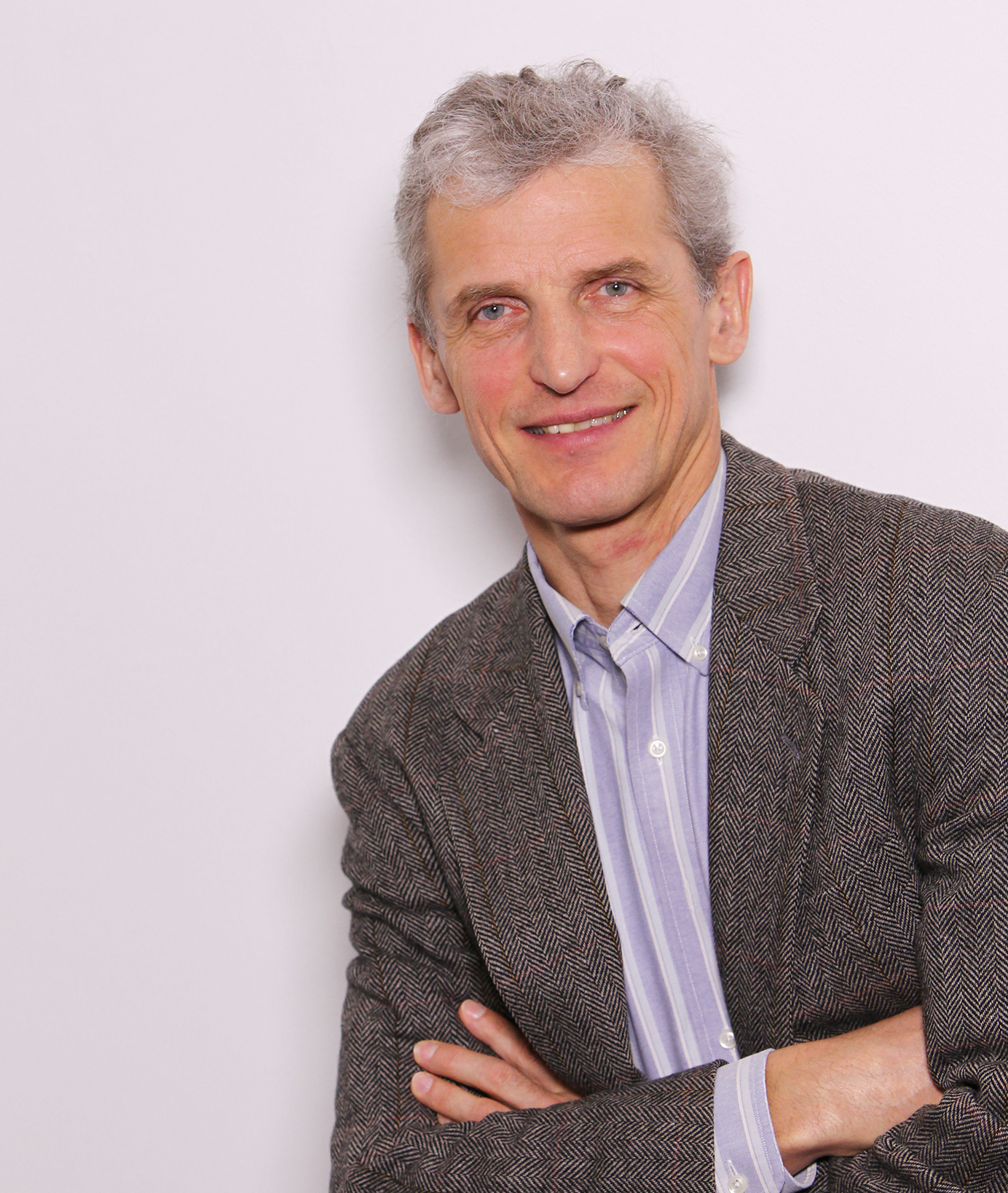
TUM Alumni Wolfgang Ketterle (Image: facesbyfrank/TUM).
Nobel Prize in Physics 2001
You received the Nobel Prize for the achievement of Bose-Einstein condensation, which you had been doing research on for years: Was there a flash of genius that led to this discovery?
Discoveries in the lab are often sudden – here you have that moment you never forget. The idea to do these experiments was more of a process. Based on knowledge and experience I had accumulated over many years, several steps made it clearer and clearer that these experiments could be successful. Many new ideas are the combination of existing knowledge applied in a new way. In retrospect, a step may seem totally obvious, but many colleagues simply did not come to this conclusion. I am of the opinion that in the majority of cases the brilliant idea does not come suddenly like a flash of genius, but originates from profound expertise.
Then how would you define creativity?
Creativity is a process and is based on hard work. Creativity entails rolling up your sleeves, either delving into literature, solving equations, working with doctoral students, or in the lab, and suddenly, because you are so deeply immersed in it, you become aware of a connection that you hadn’t seen before. Hence, creativity requires acquiring knowledge, but then analyzing the knowledge in such a way that you have a matrix that is ready for new connections. The leap of creativity therefore often looks bigger from the outside than it feels to the scientist him or herself, having already had all these indicators in mind and having gone through all the steps of development. Often the sudden wow-effect is the outside perspective. We need expressions of creativity every day because we constantly have to solve and understand new problems or find out why a new experiment is not working.
How often does it happen that you cannot solve a problem?
Again and again, I am working with my groups on ideas that we expect will work. But nature is not always cooperative (laughs). That’s why there are always setbacks. Frustration is part of the business. That is an important learning process for the students. I then say: We have to pursue ten good ideas and if one of them works in the end, we are in business, then we have great success. Having perseverance and knowing that you can do it in the end is a very important attitude. Therefore, being creative doesn’t mean having the idea of a lifetime once. The people who are considered creative have probably had ten times more ideas than can be seen from the outside.
Prof. Dr. Wolfgang Ketterle (Diploma Physics 1982)
Wolfgang Ketterle was born in 1957 as the second of three children and grew up in Eppelheim. After graduating from high school, he began studying Physics at Heidelberg University in 1976. Following his pre-diploma (Vordiplom), he transferred to TUM. He pursued Theoretical Physics and graduated in 1982 with a thesis on pin relaxation in disordered systems. He subsequently joined the Max Planck Institute of Quantum Optics in Garching and Ludwig-Maximilians-Universität in Munich where he obtained his Doctorate in 1986 with a thesis on spectroscopy of helium hydride and triatomic hydrogen.
Following his time in Garching, Ketterle moved back to Heidelberg to conduct research on combustion engines at Jürgen Wolfrum’s chair. In 1990, he moved to the United States to work on issues related to laser cooling in the group led by David E. Pritchard. In 1993, he joined the Physics Department of the Massachusetts Institute of Technology (MIT) and today holds the John D. MacArthur Chair in Physics.
Together with Eric A. Cornell and Carl E. Wieman, Wolfgang Ketterle received the Nobel Prize in Physics in 2001 for the achievement of Bose-Einstein condensation in dilute gases of alkali atoms, and for early fundamental studies of the properties of the condensates.
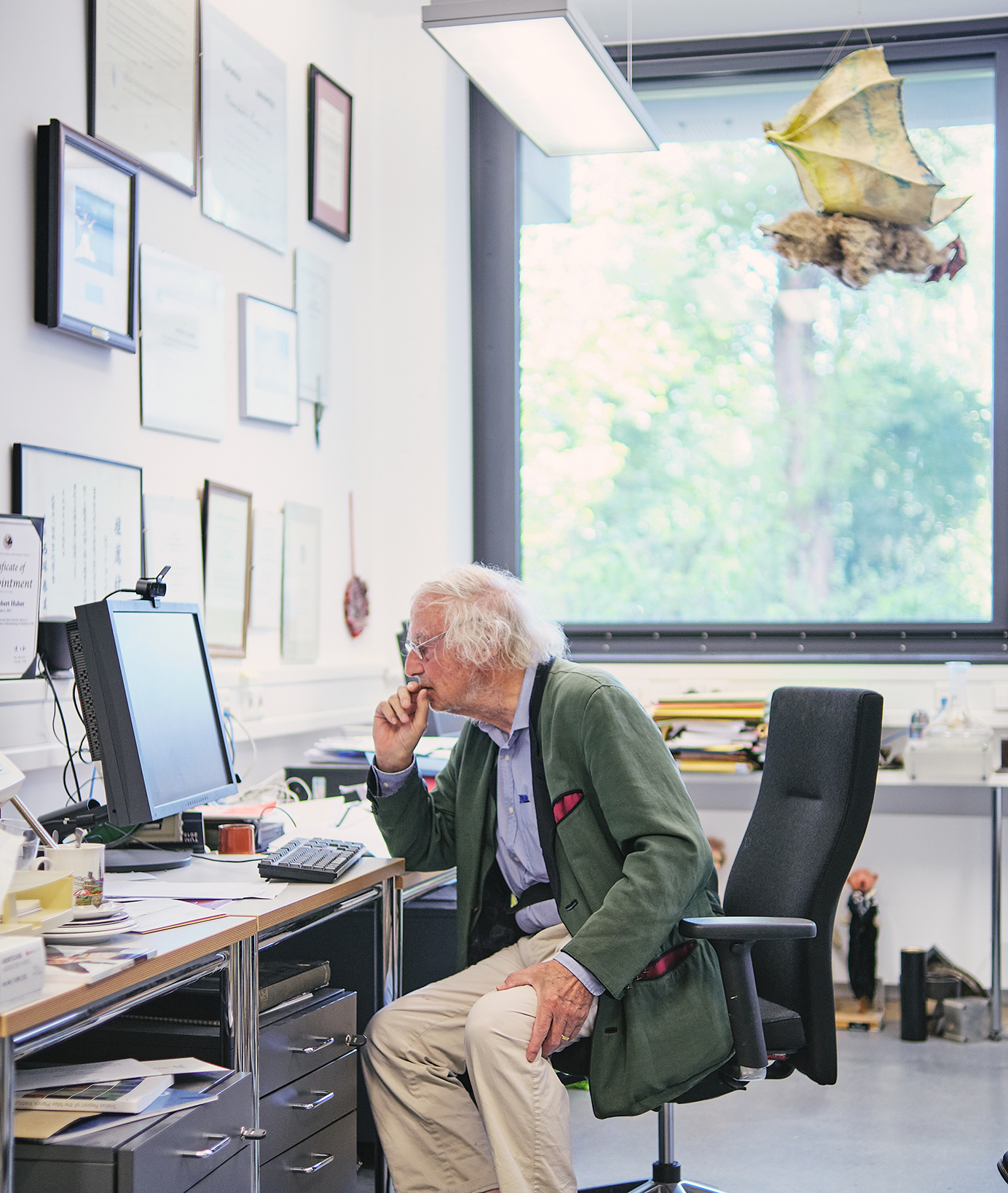
Nobel Prize laureate Robert Huber in his office at the Max Planck Institute of Biochemistry, Martinsried. In the background, a Wolpertinger is flying across the room. The German pioneer of Biochemistry Nobert Hilschmann made this one – and several others – after he retired and then bequeathed it to Robert Huber after his death (Image: Alexander Gerner/TUM).
Nobel Prize in Chemistry 1988
Where do you see the connection between creativity and science?
The Latin origin of the word creativity is “creare”, meaning to create something. In my case and in other subjects, however, we do not create anything, but explore something that already exists. We look at molecules, try to figure out their structure, but nature created them. We have found new methods to see even more clearly what nature has produced. Astronomy, for example, with its fantastic images of stars and galaxies – infinitely far away. Or X-ray Crystallography, which shows us protein molecules. These many methods, which gave us new vision, are testimonies to our creativity. I was awarded my Nobel Prize together with Johann Deisenhofer and Hartmut Michel for a new way of seeing membrane-bound proteins.
What was the journey to that point like for you? Was there a pivotal moment of breakthrough in your research that you can recall?
During my Doctorate, two famous Biochemists asked me if I wanted to help study a newly discovered insect hormone. My first task was to determine the molecular weight. However, my result using X-ray Crystallography was twice as high as what had been previously found. Therefore, I repeated my experiment multiple times. Suddenly it hit me like a lightning bolt: I was right. This discovery was a key experience – I was able to discover something that contradicted common knowledge. That moment was what prompted me to pursue an academic career in the first place. Later, there have been a few more lightning bolts (laughs).
How important was the exchange with other scientists in this process?
Soon after my call to the Max Planck Institute of Biochemistry, we set up the research group. The group comprised Chemists, Physicists and Biologists. We were the most productive group in the world and very well respected everywhere. Many of the projects we tackled were the result of discussions among ourselves and with other colleagues. I would go so far as to say that none of my many publications would have been possible without the collaboration with colleagues.
Prof. Dr. Robert Huber (Diploma Chemistry 1960, Doctorate 1963, Habilitation 1968)
Robert Huber graduated from Humanistisches Karlsgymnasium in Munich-Pasing in 1956. He then studied Chemistry at TUM and turned to Crystallography and determining the structure of organic molecules in his diploma and doctoral theses under Walter Hoppe at the Max Planck Institute for Protein and Leather Research. Subsequently, he solved in particular the question of the atomic structure of the insect metamorphosis hormone ecdysone, which sparked his interest in biologically relevant macromolecules and the development of crystallographic methods. In 1967, Huber set about the structural elucidation of the oxygen-binding insect protein erythrocruorin as part of his habilitation with Hoppe, proving, among other things, its resemblance to the mammalian globins.
In 1971, Robert Huber became Director of the Department of Structural Research at the newly founded Max Planck Institute of Biochemistry in Martinsried near Munich. In 1976, he was appointed Professor of Chemistry at TUM. He is the co-founder of two biotech companies based in Martinsried, which offer services for drug research and development in medicine (Proteros, 1997) and for the treatment of autoimmune diseases (Suppremol, 2005). Robert Huber has been Professor Emeritus since 2005. In 2013, Professor Dr. Robert Huber was welcomed into the circle of TUM Emeriti of Excellence by TUM President Prof. Dr. Wolfgang A. Herrmann.
In 1988 he received the Nobel Prize in Chemistry together with his former doctoral student TUM Alumni Johann Deisenhofer and with Hartmut Michel for his major contributions to X-ray crystallographic analysis and elucidation of the spatial structure of the intermembrane response center of photosynthesis, the biological photocell.
